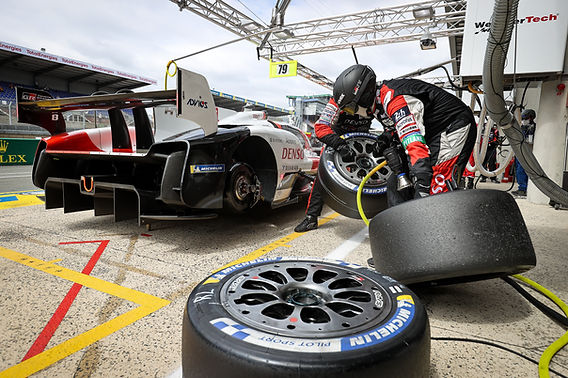Drivers Complain Of Facing Unsafe Heat In Qatar
In the world of Formula 1, the drivers are no strangers to extreme conditions. From the blistering heat of Bahrain to the relentless rain at Silverstone, they have shown remarkable resilience in battling the elements. However, the 2023 Qatar Grand Prix brought a new level of challenge for the racers as they faced what can only be described as “torturous” heat.Qatar, with its desert landscapes and scorching temperatures, lived up to its reputation during the 2023 Grand Prix.
With race-time temperatures hovering around 40°C (104°F), drivers had to combat not only their competitors but also the merciless desert sun.What made Qatar a racing inferno?The extreme conditions in Qatar were intensified by the high humidity and a distinct lack of wind, creating a situation that was not just uncomfortable but also potentially dangerous. The race unfolded in the unforgiving Qatari heat, subjecting the drivers to a series of grueling challenges.
1. Dehydration:
Formula 1 drivers already lose a significant amount of fluid during a race due to intense sweating. In Qatar’s extreme heat and humidity, the rate of dehydration increased dramatically. Staying hydrated became a critical concern for the drivers, who had to replenish the fluids lost during the race.
2. Physical Exhaustion:
Formula 1 racing is always physically demanding, but the extreme heat in Qatar pushed drivers to the limit. The intense conditions led to fatigue and reduced concentration levels, adding an element of risk to the high-speed competition.
3. Loss of Focus:
The extreme heat had the potential to affect cognitive functions. Drivers reported slower reaction times and impaired decision-making, factors that are critical in a sport where every second counts.
4. Overheating Inside the Car:
Formula 1 cockpits are already known for their sweltering temperatures. However, the extreme conditions in Qatar made them even more unbearable. Cockpit temperatures soared to levels that could be dangerous for the drivers.5. Tire Management: The scorching track temperatures posed a significant threat to tire integrity. High temperatures can cause tires to overheat and degrade rapidly, affecting both the car’s performance and potentially leading to unpredictable tire failures.Safety is paramount.Formula 1 is known for its rigorous safety protocols, with the well-being of drivers always taking precedence. Race organizers, teams, and the Fédération Internationale de l’Automobile (FIA) continuously monitor weather conditions and consider driver welfare during a race.Key safety measures include:1. Hydration: Drivers are strongly encouraged to remain hydrated both before and during the race. They often use specially designed hydration systems during pit stops to ensure they can maintain their fluid levels.2. Cooling Systems: Formula 1 cars are equipped with advanced cooling systems that help manage cockpit temperatures. These systems are crucial in preventing drivers from overheating during races.3. Medical Support: Every Formula 1 race features medical teams on standby, ready to provide immediate assistance in case of any heat-related issues. This is a crucial part of ensuring driver safety.4. Delaying or Canceling the Race: In extreme cases, races can be delayed or even canceled if weather conditions pose a significant risk to drivers’ safety.Learning from QatarThe extreme conditions encountered during the 2023 Qatar Grand Prix serve as a stark reminder of how environmental factors can significantly impact motorsport. Formula 1 must adapt to mitigate risks while still maintaining the excitement and spectacle of the sport.The lessons learned from the Qatar race will undoubtedly influence future decisions regarding extreme weather conditions in Formula 1. Driver safety remains the top priority, and striking a balance between the thrill of racing and the welfare of the drivers will be essential in adapting to changing climates and challenging environments.As Formula 1 continues to explore new locations and expand its reach, addressing concerns related to extreme weather conditions will be a top priority. The FIA, teams, and race organizers must work together to ensure that drivers are not exposed to unsafe conditions in the future. Qatar’s challenging conditions have set the stage for important discussions about driver safety and well-being in the evolving world of Formula 1.






















